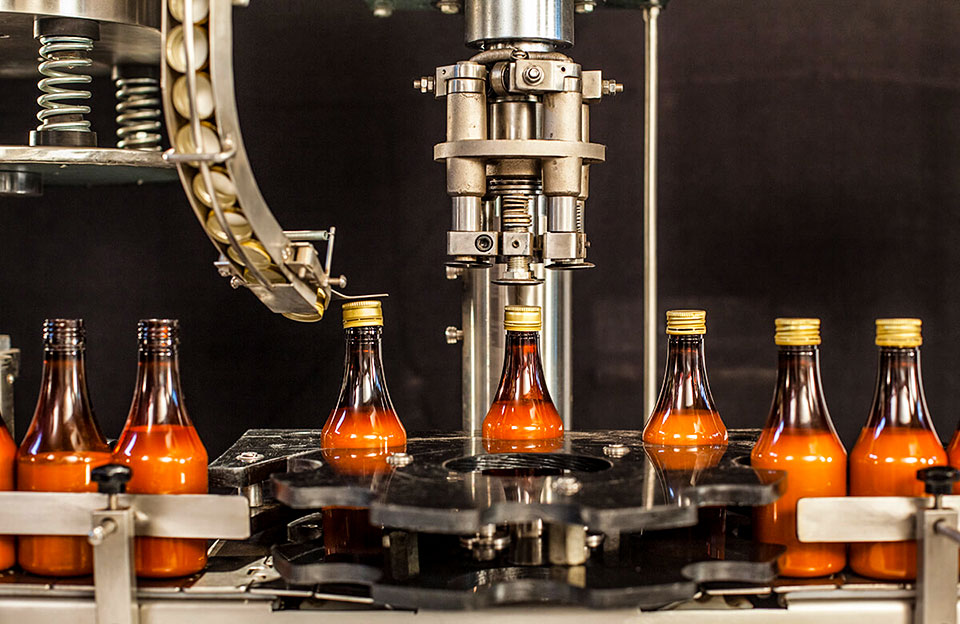Market Overview and Importance of Automatic Capping Machine
Industry IRC estimates that the automatic capping machine market will be worth about $7 billion by 2023. The market for automatic capping machines has changed substantially since 1990. The demand for automatic capping machines in industries such as cosmetics, pharmaceuticals, and food and beverages is growing and is expected to grow at a CARG of 5.8%. This growth is driven by increasing demand for packaged products, increasing automation in the packaging industry, and the need to improve production efficiency. The importance and market prospects will continue to grow as the packaging industry evolves and embraces automation.
- Improve Efficiency:The automatic capping machine significantly improves production efficiency through the automatic capping process, which can cap a large number of containers in a short time, reducing the time and labor required for manual capping. This increased efficiency translates into higher throughput and cost savings for the business.
- Consistency and Quality:Automatic capping machine ensure consistent and accurate capping applications, can be capped with precise torque control, and prevent leakage, contamination, or product damage, thereby improving product quality and customer satisfaction. The consistency of the closure also helps maintain the integrity of the packaged product and extends the product’s shelf life.
- Versatility:The automatic capping machine is designed to adapt to various types of caps and containers and can handle different cap sizes, shapes, and materials, enabling manufacturers to package various products with a single machine. This versatility is especially beneficial for companies that manufacture multiple product lines or frequently change packaging requirements.
- Improved Safety and Hygiene:Automatic capping machines minimize the risk of contamination and ensure product integrity by eliminating manual handling of caps; meanwhile, automatic machines can be equipped with cap sterilization or clean-in-place System and other functions to further improve the safety and sanitation level in the capping process.
Industry Development Trend of Automatic Capping Machine
The development of capping machines is guided by high-tech and market demand. From the previous production based on the improvement of existing equipment, the soft and hard control systems that match various capping machines have been developed so that the capping machines can be directed to information. A big step forward in the direction of modernization and intelligence.
- Integration of Advanced Technologies: automatic capping machines increasingly adopt advanced technologies to enhance their functions and performance, including integrating sensors, machine vision systems, and robotics. Sensors can provide real-time feedback on the capping process, detecting anomalies in time to ensure precise torque control. Machine vision systems can check caps and containers for defects to control filling quality. Robotic technology enables precise and efficient handling of caps and containers, further increasing automation and productivity.
- Flexibility and Customization: there is a growing demand for automatic capping machines that handle various cap sizes, shapes, and materials. Previous capping machines had fewer devices for special requirements and materials, and manufacturers were looking for flexible and machines that could adapt to their specific packaging requirements. So automatic capping machines are trending towards adjusting settings, tool-less changeovers, and modular designs that allow quick and easy adjustments, reducing downtime during product changeovers and meeting various packaging needs.
- Integration with Packaging Lines: automatic capping machines are increasingly integrated into complete packaging lines, integrated with other packaging machinery (such as filling and labeling machines) to provide seamless operations and reduce manual handling required, simplifying the packaging process. It can effectively realize the integration of enterprise production processes and maximize enterprise efficiency.
- Intelligent and Interconnected Capabilities: with the advent of Industry 4.0 and the Internet of Things (IoT), automatic capping machines have enhanced intelligence and interconnect. These machines are connected and can be equipped with IoT sensors for real-time monitoring, data collection, and remote control. Manufacturers can monitor machine operations, receive alerts on maintenance needs, and access performance data for timely analysis and optimization.
- Environmental Protection and Sustainability: the industry is also paying more and more attention to the sustainability and environmental protection solutions of automatic capping machines. In the overall design of the automatic capping machine, the energy saving, low consumption, and environmental protection of the machine are put in the first place at the same time. Manufacturers are developing machines that minimize energy consumption, reduce material waste and offer sustainable packaging options. For example, capping machines can use energy-efficient motors to create caps from recyclable or biodegradable materials.
- Integration of Artificial Intelligence: artificial intelligence (AI) is gradually entering the automatic capping machine. Artificial intelligence algorithms can analyze data collected from sensors and machine vision systems, detect anomalies in time, optimize capping parameters, and make automatic adjustments in real-time. AI can also enable predictive maintenance by analyzing historical data and identifying potential machine failures or maintenance needs.
Conclusion
Automatic capping machine plays a vital role in streamlining the packaging process, ensuring product quality, and meeting growing market demands. With the development of the packaging industry and the embrace of automation, there is an increasing demand for more efficient, flexible, and intelligent automatic capping machines. Manufacturers strive to incorporate advanced technologies, customization options, and sustainability features into machines and continue contributing to sustainable and efficient production processes.


